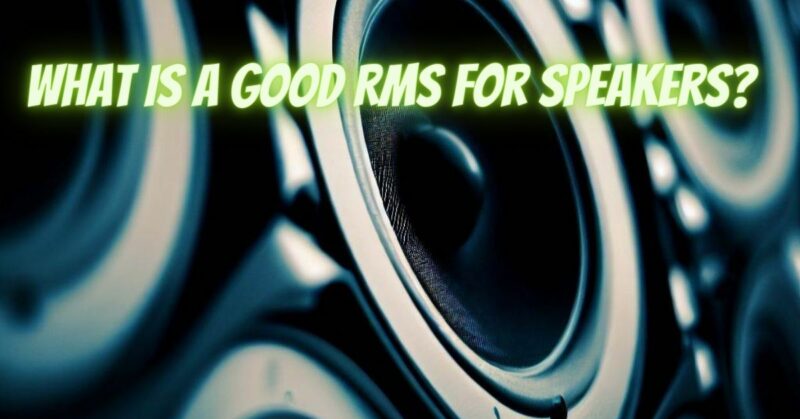When considering speakers, understanding their power capabilities is essential to achieve optimal performance. One common question that arises is, “What is a good RMS for speakers?” In this article, we will explore the concept of RMS power and help you identify the ideal range for RMS power when selecting speakers.
- Understanding RMS Power: RMS (Root Mean Square) power is a measurement that represents the continuous power handling capability of a speaker. It indicates the average power that a speaker can handle over an extended period without distortion or damage. RMS power is a more reliable indicator of a speaker’s performance than peak power, which only represents short bursts of power.
- Speaker Size and Application: The ideal RMS power for speakers depends on various factors, including the speaker size and the intended application. Larger speakers generally have higher power handling capabilities and can handle more RMS power without distortion. Smaller speakers, such as bookshelf or desktop speakers, typically have lower RMS power ratings but can still provide satisfactory performance in smaller listening environments.
- Consider Amplifier Compatibility: When determining a good RMS power for speakers, it is crucial to consider the compatibility with the amplifier or receiver. The amplifier’s RMS power output should ideally match or slightly exceed the RMS power rating of the speakers. This ensures that the amplifier can adequately drive the speakers without overloading or underpowering them, resulting in optimal audio performance.
- Room Size and Listening Preferences: The size of the room and your listening preferences also play a role in determining the appropriate RMS power for speakers. In larger rooms or when higher volume levels are desired, speakers with higher RMS power ratings are generally recommended to provide sufficient headroom and dynamic range. In smaller rooms or for lower volume listening, speakers with lower RMS power ratings may be suitable.
- Considerations for Different Speaker Types: Different speaker types have varying RMS power requirements. For example, floor-standing speakers and subwoofers typically have higher power handling capabilities and require higher RMS power ratings to deliver deep bass and impactful sound. On the other hand, satellite speakers or surround speakers in a home theater setup may have lower RMS power ratings since they primarily reproduce mid-range and surround sound effects.
Conclusion:
Determining a good RMS power for speakers involves considering factors such as speaker size, application, amplifier compatibility, room size, and listening preferences. It is important to strike a balance between the speaker’s power handling capabilities and the power output of the amplifier to achieve optimal audio performance without risking distortion or damage. When selecting speakers, refer to their RMS power rating as a reliable indicator of their continuous power handling capability. By choosing speakers with an appropriate RMS power rating for your specific needs, you can enjoy balanced and immersive audio experiences with clarity, accuracy, and the desired level of volume and impact.

